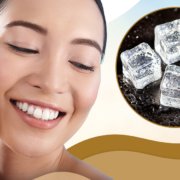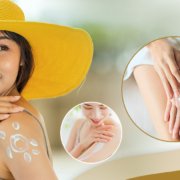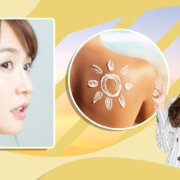Icing your face isn’t just for black eyes and bumps on your forehead. In a world of wacky wellness-related tips and tricks, this recent TikTok trend takes it back to basics: facial icing as a means of reducing puffiness.
So does it work? Let’s see why this old-fashioned skin care method is in the spotlight again — and what it can do for you.
What is facial icing?
It’s not that deep: Facial icing is exactly what it sounds like, the process of applying ice to your face. Low temps cause blood to rise beneath the surface of the skin, which has a variety of benefits.
Though it can be done at a spa or at an aesthetics clinic, it’s easy to reap the rewards of simple ice facials at home.
What are the benefits of icing your face?
If you wake up feeling puffy or just notice that your skin is especially dull — say, after a night of drinking, eating poorly, or not sleeping well — facial icing might be the right morning move for you.
1. Reduces swelling, puffiness, and tenderness
Everyone knows about the benefits of applying ice to injuries but it does the same for the face. The cold helps help drain excess fluids from the lymphatic system, which also helps decrease facial puffiness
2. Lessens the appearance of under-eye bags
The same lymphatic drainage that reduces overall puffiness can specifically reduce the appearance of a puffy under-eye area. Gently icing under the eyes can help release fluid buildup, drain toxins and cause a tightening effect.
Don’t expect a miracle, though. She warns that if your under-eye bags are of the genetic variety, facial icing won’t able to work any extra-special magic.
3. Brightens your complexion
Who needs a top-of-the-line highlighter when an ice cube can give you the same glow for free? Icing constricts the blood vessels in your face, which can lessen the appearance of pores and wrinkles and make you look lighter, brighter, and more radiant overall.
4. Free and easy to do
You don’t need any fancy equipment or expensive products to ice your face. This is something that everyone can do at home. It offers an easily accessible way to tend to your skin care needs.
How to safely ice your face
All you need to ice your face is, well, some ice. However, most doctors do not recommend applying it directly to your face on its own, as it could cause irritation and redness.
Instead, wrap an ice cube in a thin cloth, which will protect the skin on your face and your hands, and begin to lightly massage your face. Rub the ice around your face in a circular motion. Lightly massage the following areas:
- around your mouth
- Cheeks
- Chin
- Forehead
- Jaw
- Nose
Don’t let the ice rest on any portion of your skin for too long, as it could cause irritation and redness — and even frostbite. And do remember to moisturize after icing your face so that your skin doesn’t dry out.
Who should avoid ice facials
Facial icing is safe for most people, but be mindful to steer clear under certain circumstances and conditions.
- Thin or sensitive skin: Facial icing may cause irritation and redness, especially in people whose skin is already susceptible.
- Broken capillaries: If you can see a spider web of little red lines under your skin, avoid ice, which can make them worse and prevent healing.
- Facial procedures: If you’re recovering from cosmetic surgery, lasers, peels, or another procedure, skip facial icing (and any other forms of intervention not explicitly recommended by your doctor) in favor of letting your skin heal naturally.
How often can you ice your face?
Facial icing is a nice little trick for a natural pick-me-up but isn’t a cure-all or a long-term fix for skin problems like acne, genetic under-eye bags, wrinkles, or other issues.
You shouldn’t do it more than once a day. It’s just a temporary way to get a little wake-up for your skin after a long night or a hard day.
And remember: No shortcut or quick fix works as well as prevention. To avoid puffy skin altogether, prioritize sleep, hydration, and nutrition.
Our doctors know the best tricks when it comes to your face and skin!
Call our Patient Care Lines: (+632) 7-368 5238 l (+63) 917 862 7454 l (+63) 921 217 0517 for inquiries, questions, and appointments or talk to our consultants via LiveChat here on our website.






